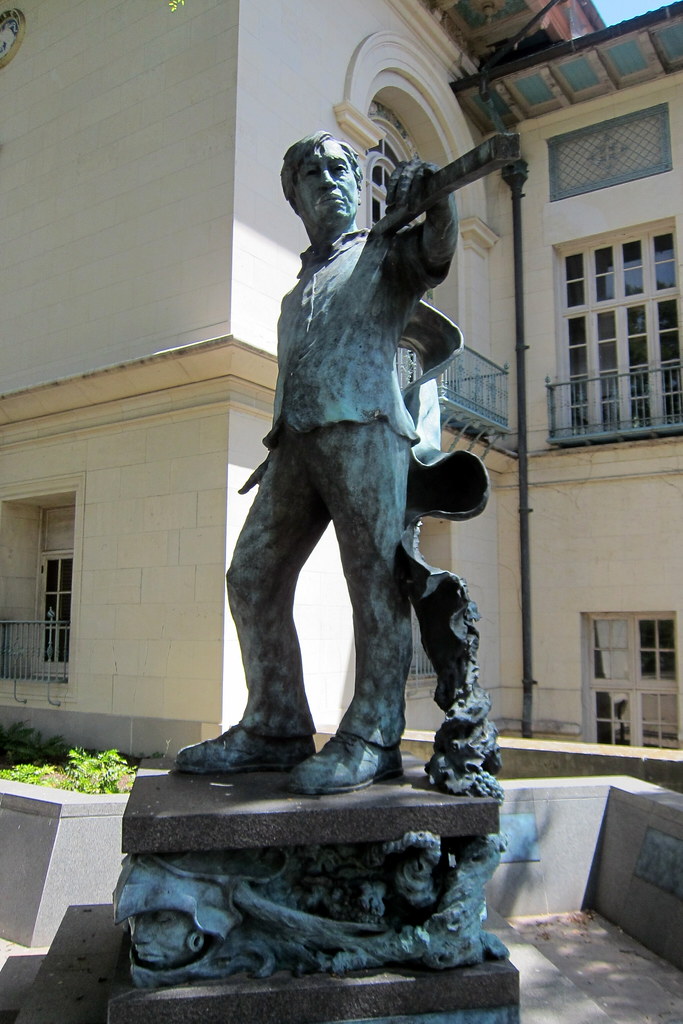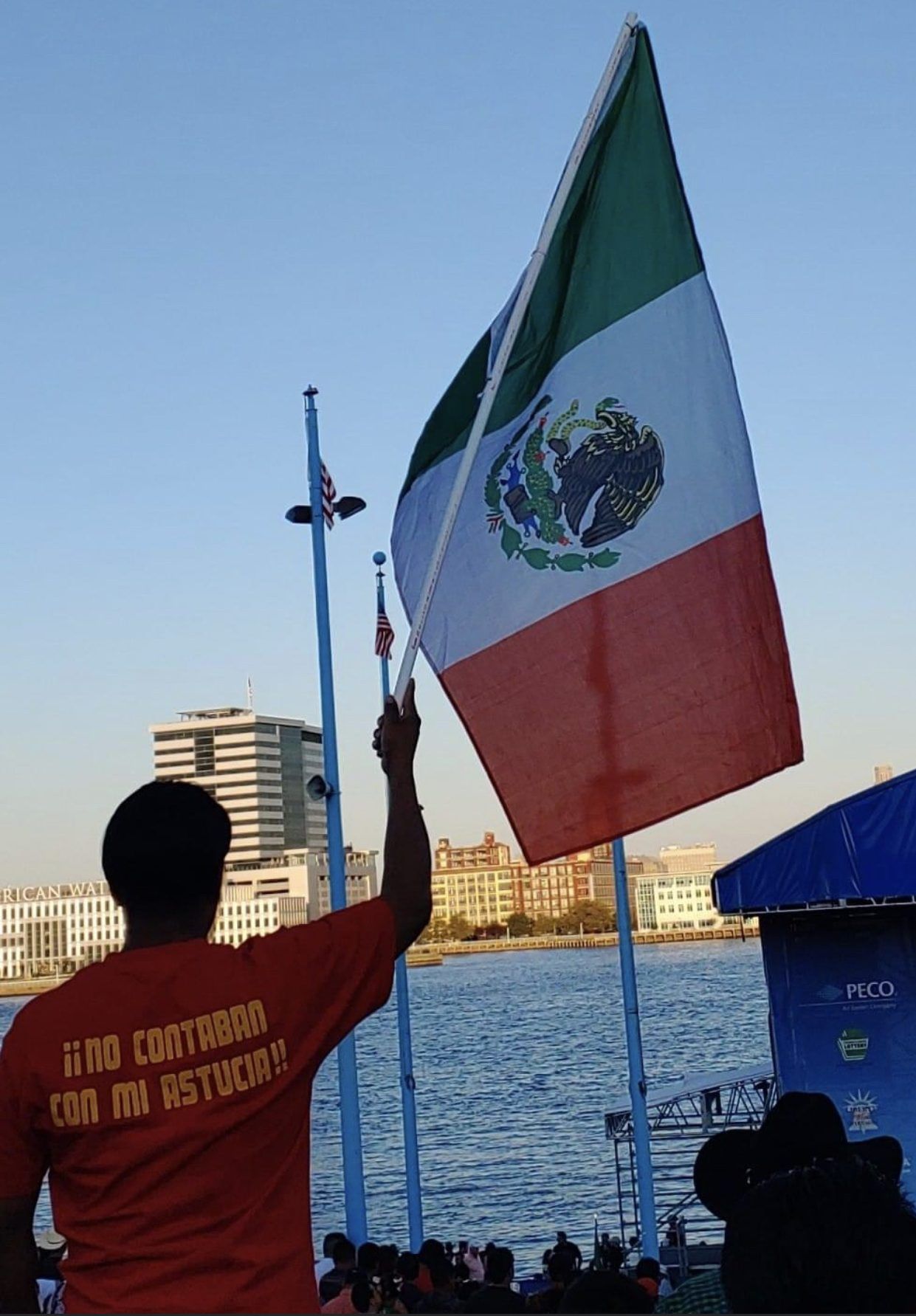When President Biden took office, he placed a model of César Chávez’s head in the Oval Office, but who is this person and what does this mean?
In 1927, César Chávez was born to immigrant parents in a small adobe home in Yuma, Arizona. His family had to move to California in 1938, after his father was swindled by a land-owner that broke their agreement, leaving them with nowhere to live.
After graduating from the eighth grade, his father was hurt in an accident and since Chavez didn’t want his mother to work in the fields, he became a migrant farmer instead of attending high school. Believing his only way out of poverty was by working, he and his family worked on fields across California.
Chávez joined the U.S. Navy in 1946, at the age of 19, and served for two years. Later, in 1962, César Chávez and with the help of Dolores Huerta, another Mexican-American activist, established the National Farm Workers Association.

“César Chávez Students Art Contest” by NOWCastSA is licensed under CC BY-NC-SA 2.0
In 1965, he was approached by the organizer of the Filipino Delano vineyards strike, Larry Itliong, to get the Mexican-American farmworkers to strike along with them. While Chávez was inspired by the idea, he explained that he would need two to three years to organize everything before joining forces with Itliong.
Itliong said that if Chávez and the Mexican-American workers ignored the Filipino strike, he and his workers would do the same to his organization in retribution.
This helped lead Chávez to Father Donald McDonnell and Fred Ross, two members of the Community Service Organization who eventually recruited him. This organization pushed Chávez in the direction of what is now known as the five-year Delano Grape Strike.
Not wanting history to repeat itself with how prior boycotts went for other farmworkers many years before him, he paid close attention to how Gandhi and Martin Luther King Jr. both boycotted in 1930 and 1950, respectively.
He decided that, just like Gandhi, he would start fasting for long periods of time, which would help his organization get news coverage. This would give them the ability to spread more awareness for what they were fighting for, and hopefully, they would gain more supporters as they went along.
He fasted on three different occasions; the first time was in 1968 for 25 days, and he would only drink water. During this, he lost around 35 pounds, which caused concern, as it could be life-threatening. He did this again in 1972 for 24 days, and one last time in 1988 for 36 days, which was his longest fasting period.
After five years of César Chávez and his organization boycotting the Delano grape vineyard, in 1975, California passed the landmark law, which finally gave the Californian farmworkers’ rights to boycott and allow collective bargaining.

“Cesar Chavez Mass Flyer” by Korean Resource Center 민족학교 is licensed under CC BY-ND 2.0
Chávez went on to spend the next several years continuing to fight for the rights of farmworkers, eventually passing away just a short distance from his birthplace and hometown of Yuma, Arizona, at the age of 66 in 1993.
In 2014, during his second term in office, President Obama recognized and honored César Chávez’s fight for workers’ rights by declaring March 31, Chávez’s birthday, as a federal holiday.
Since President Biden has only recently been sworn into office, how he intends to go about this presidency is still up in the air. What could placing this bust of César Chávez mean for the future of his presidency?
“If the political is personal and the personal is political, then at least who he chooses to put front and center, he’s aware of the other issues going on in the climate,” said Dr. Nancy Watterson, an American Studies professor. “I think Chávez can stand for this bigger sense of inequities.”
With all this symbolic and social importance surrounding Chávez and his legacy, what could the placement of Chávez’s bust in the Oval Office mean about Biden’s next four years?
“He’s going to bring into the way he does business, the way he leads, the voices that have been typically marginalized or disenfranchised,” said Watterson. The people President Biden picked for his cabinet already reflect that push for diversity.





Biden’s choices have not gone unnoticed by Latinx activists in the US either, and their tones have been decidedly optimistic. In an interview with the Washington Post, Dolores Huerta, Chávez’s co-founder of the National Farmworkers Association, said, “For the president to have César’s bust there and to do it so prominently, to have it so visibly, this is like a message to the world: These are the people we have to take care of. This is what being a president is, to take care of the most vulnerable people in our society.”
“It brings a little bit of honor to our [Mexican] community and how we’re perceived,” Jemmy Medina Raya, a senior criminology and sociology major, said
Paul Chávez, César Chávez’s son and the president of the César Chávez Foundation, was the one to supply the White House with his father’s bust, though he and his family were not told in advance where in the Oval Office Biden would place it.
This can send a strong message to those communities that have suffered from the last four years, especially the Latinx community. Even César Chávez’s own son says that this could be a sign that President Biden will commit to building back the bond between the president and the Latinx community.
“It’s a statement, the fact that his administration put that so explicitly visible,” Medina Raya said. “I think it’s a statement to what the administration wants to do.”
While President Biden has only just begun his four-year journey, this is a good start to rebuilding the trust with this community.



